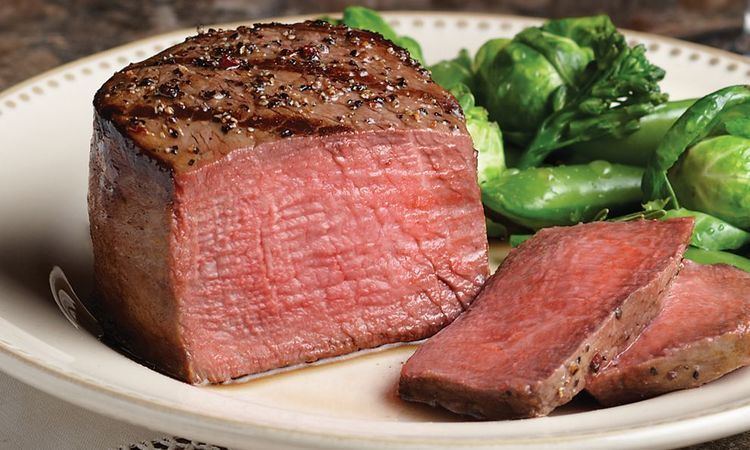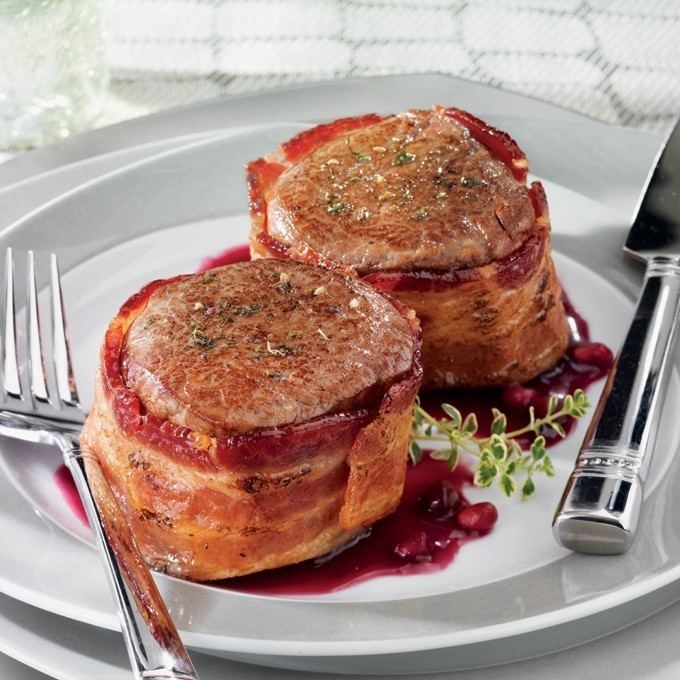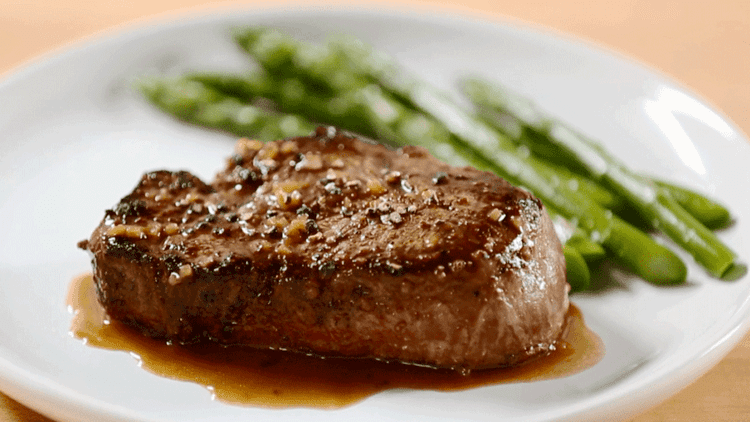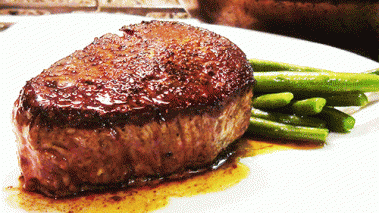Type Tenderloin cut of beef | ||
Similar Fillet, Beef, Sirloin steak, Beef tenderloin, Strip steak | ||
Filet mignon recipe how to cook perfect filet mignon best pan oven di kometa dishin with di 45
Filet mignon (/ˌfiːleɪ ˈmiːnjɒ̃/; French for "tender fillet" or "dainty fillet") is a steak cut of beef taken from the smaller end of the tenderloin, or psoas major of the beef carcass, usually a steer or heifer. In French this cut can also be called filet de bœuf, which translates in English to beef fillet. When found on a menu in France, filet mignon generally refers to pork rather than beef.
Contents
- Filet mignon recipe how to cook perfect filet mignon best pan oven di kometa dishin with di 45
- How to cook a filet mignon indoors steak university
- Other names
- Preparation
- References

The tenderloin runs along both sides of the spine, and is usually harvested as two long snake-shaped cuts of beef. The tenderloin is sometimes sold whole. When sliced along the short dimension, creating roughly round cuts, and tube cuts, the cuts (fillets) from the small forward end are considered to be filet mignon. Those from the center are tournedos; however, some butchers in the United States label all types of tenderloin steaks "filet mignon." In fact, the shape of the true filet mignon may be a hindrance when cooking, so most restaurants sell steaks from the wider end of the tenderloin - it is both cheaper and much more presentable.

The tenderloin is the most tender cut of beef and is also arguably the most desirable and therefore the most expensive. The average steer or heifer provides no more than 500 grams of filet mignon. Because the muscle is not weight-bearing, it contains less connective tissue, which makes it tender. However, it is generally not as flavorful as some other cuts of beef (example, primal rib cuts), and is often wrapped in bacon to enhance flavor, and/or is served with a sauce.

How to cook a filet mignon indoors steak university
Other names
The same cut of beef can also be called:


In the U.S., both the central and large end of the tenderloin are often sold as filet mignon in supermarkets and restaurants. The French terms for these cuts are tournedos (the smaller central portion), châteaubriand (the larger central portion), and biftek (cut from the large end known as the tête de filet (lit. "head of filet") in French).

Porterhouse steaks and T-bone steaks are large cuts that include the fillet. The small medallion on one side of the bone is the fillet, and the long strip of meat on the other side of the bone is the strip steak—in Commonwealth of Nations usage, only the strip steak is called the porterhouse.
Preparation
Filet mignon may be cut into 1- to 2-inch-thick portions, then grilled and served as-is. One also may find filet mignon in stores already cut into portions and wrapped with bacon. High heat is the usual method for cooking the filet mignon, either grilling, pan frying, broiling, or roasting. Traditionally in European and American restaurants, fillets are most often served in a cognac cream sauce, au poivre with peppercorns, or in a red wine reduction.
Bacon is often used in cooking filet mignon because of the low levels of fat found in the cut (see barding), as fillets have low levels of marbling, or intramuscular fat. Bacon is wrapped around the fillet and pinned closed with a wooden toothpick. This adds flavor and keeps the fillet from drying out during the cooking process.
Traditional cooking calls for the filet mignon to be seared on each side using intense heat for a short time and then transferred to a lower heat to cook the meat all the way through. Filet mignon is often served rarer than other meats. Those preferring a more well-done steak can request a "butterflied" filet, meaning that the meat is cut down the middle and opened up to expose more of it to heat during the cooking process.
